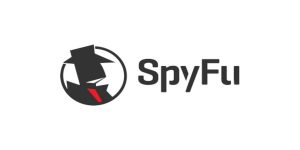Are you looking for a sure-fire way to improve your website's performance so you can rank higher on search engine results? Consider using an AI-powered website audit tool like Surfer SEO.
Key Takeaways
While there are many tools out there that can run top to bottom website audits at the push of a button, most of the time the improvements you’ll get will be on the margins (unless, of course, your website is a complete SEO disaster.)
The reason for this is that websites are not “technically” ranked by search engines, individual webpages are. So, for an audit to produce results that can actually move the needle, you’ll need to audit your website one page at a time.
The problem with this approach is that it’s very labor intensive. The solution? A page-level AI-powered SEO audit tool like Surfer SEO.
With the help of AI, you can get results in a fraction of the time. And since AI tools are constantly learning, they will only get better over time.
Disclosure: Although I receive affiliate compensation at no additional cost to you to support this site that compensation in no way influences my recommendations, which are strictly informed by my 10+ years of online business experience consulting for clients large and small. My aim is to always recommend tools that offer the best return for your investment (for more details, read my Affiliate Disclosure).
What Is a Website SEO Audit?
A website SEO audit is the process of evaluating a website for its compliance with search engine optimization best practices. The purpose of an SEO audit is to identify any areas of a website that could be improved in order to increase its visibility and organic search traffic.
During an SEO audit, a website’s pages are individually evaluated on a variety of factors, such as backlinks, word count and page structure, among many others.
The main objectives of a page-level SEO audit are to identify optimization issues that may be hindering your search rankings as well as to provide backlink analysis to help you discover potential links to be acquired.
Once these issues are identified, Surfer SEO will show you specifically the steps you need to take in order to resolve them.
What Are the Benefits of AI-Driven Website Audits?
When it comes to website audits, there's no better assist than artificial intelligence. AI-driven website audits are more efficient, accurate, and comprehensive than traditional site-wide audits or manual audits.
Here are the main benefits:
- A more accurate assessment of your site. AI-driven website audits can take into account a wider range of data points, which leads to a more accurate assessment of your site.
- Increased efficiency. An AI-powered website audit will be able to analyze your site much faster, which means you'll get results sooner and will be able to take steps to improve your site a lot quicker.
- Improved insights. With an AI-driven website audit, you'll be able to get much deeper insights into what search engines are looking for to rank you higher, since search engines use AI in their own ranking algorithms.
What Factors Does an AI-Driven Tool Like Surfer SEO Look at When Conducting a Website Audit?
When conducting an on-page SEO website audit, Surfer SEO looks at a variety of factors, including:
- Backlinks
- Internal links
- Semantic terms
- Word count
- Exact keywords
- Partial keywords
- Page structure
- Title and meta description length
- Time to first byte and page loading time
The goal of the audit is to use the above factors to compare your page for your target keyword against all pages that rank for the same keyword on the first page of search results.
Surfer SEO will unearth all your weak spots one by one so you can take the necessary corrective action and, in the process, become page-one compliant.
How to Use Surfer SEO to Audit Your Website at Warp Speed
The best way to show you the power of Surfer SEO is to illustrate the entire top to bottom auditing process using a real-world example.
So, I’m going to use the Crazyegg blog as my guinea pig and I’m going to run an on-page SEO audit for one of their articles, specifically:
“What is On-Page SEO and How it Can Affect Conversions”
Here’s the URL:
https://www.crazyegg.com/blog/on-page/
And here’s their target keyword:
“on page seo”
So, let’s fire up the AI-powered Audit feature inside Surfer SEO and enter the article’s URL and target keyword in the corresponding fields:
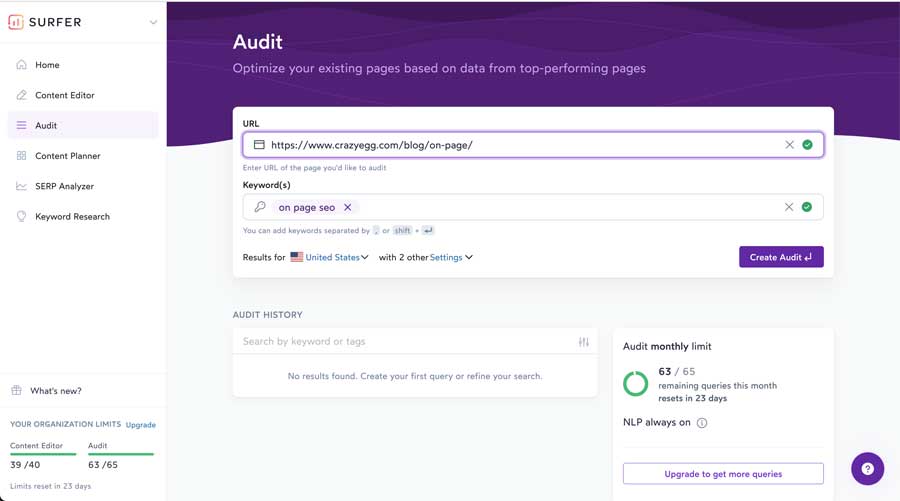
After hitting “Create Audit” we’ll get the following screen…
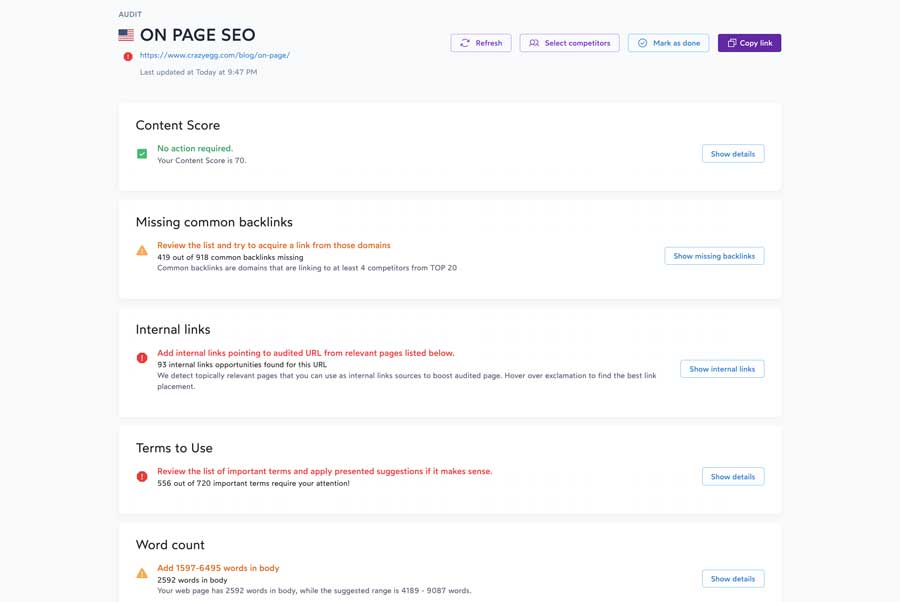
…where all the audit categories are listed, including a summary of their recommendations.
In order to find out more specifics, we need to drill down into each audit category.
Missing Common Backlinks
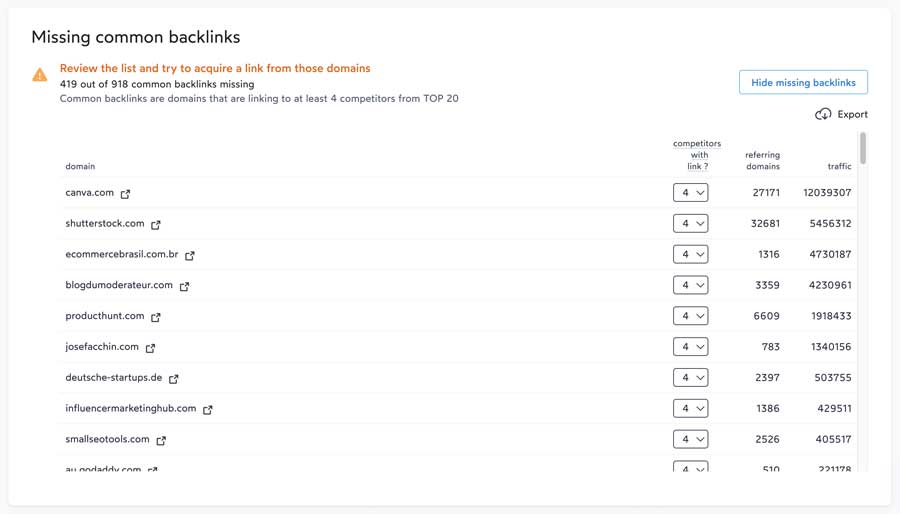
This screen is a great launching pad to plan a backlink outreach campaign that’s specifically targeted to your webpage.
At the end of the day, it’s individual pages like this one that drive most of the traffic to a site, based on keywords that people search for.
So, it makes sense that you try to prop up your search rankings by sending backlinks to specific pages instead of just your top level domain page.
This audit category will show you a list of relevant referring domains that are linking to top competitors for your target keyword, yet not linking to your page.
Internal Links
Next, let’s change the focus from external incoming links to internal ones. In order to boost your page in search rankings you need to focus on internal links as well as external ones:
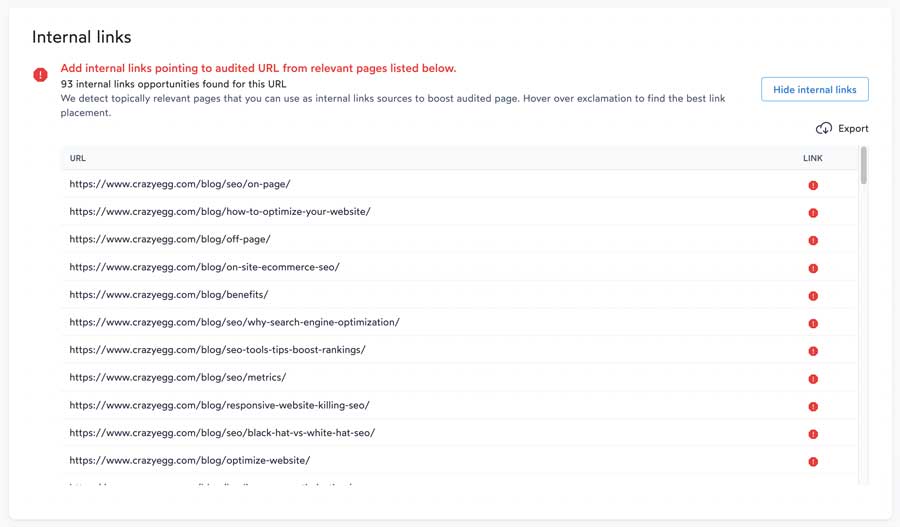
Surfer SEO will recommend topically relevant pages on your website that should be linking to the page you’re auditing, and even recommend the best placement for your internal links.
Terms to Use
Next, Surfer SEO will switch its focus to the content in your article. Search engines like Google use AI to figure out the meaning of your words and how they are semantically related to your topic.
Surfer SEO makes use of the same AI technology to reverse-engineer the highest ranking articles that also target your keyword, and then highlights semantically relevant terms that need to be added to your article in order to qualify for a page one placement as well:
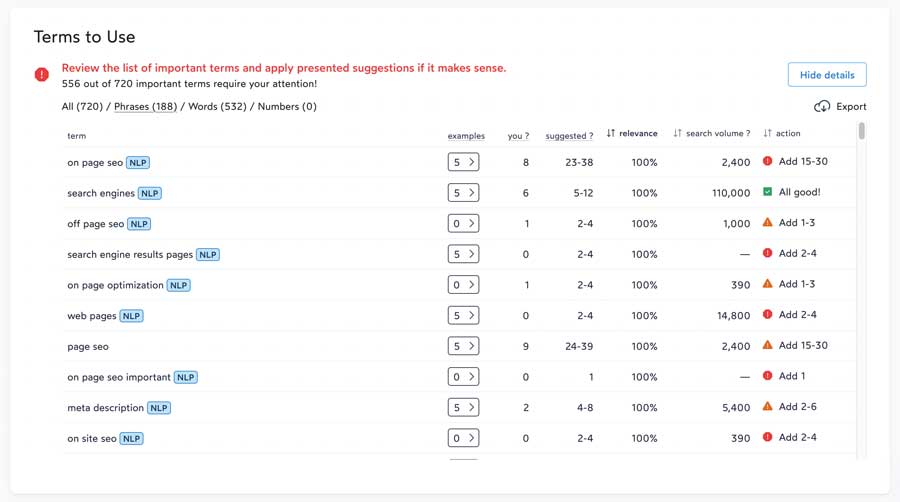
You’ll notice that some of the terms will show in Green when you’re in full compliance (look under the Action column), Orange when you are in partial compliance (you’ll need to add more occurrences of those terms) and Red when you’re in non-compliance.
All you have to do now is to add these terms where appropriate to increase your chances of landing on the first page of search results.
Word Count
Next in the audit is your article’s word count. Here, Surfer SEO will show you how your word count compares with the top contenders for your target keyword on the first page of search results:
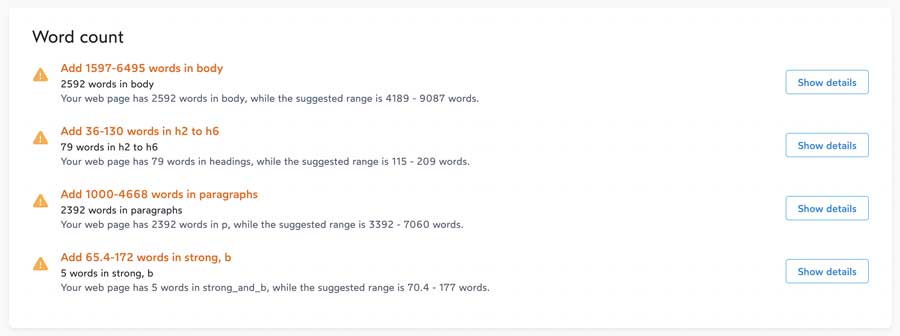
Your goal now is to add (or in some cases reduce) the overall word count in the body of your page as well as the word counts of your headings, paragraphs and bolded terms in order to come into compliance with the top ranking sites for the keyword you're targeting.
Exact Keywords
Next in your on-page SEO audit are exact keyword counts:
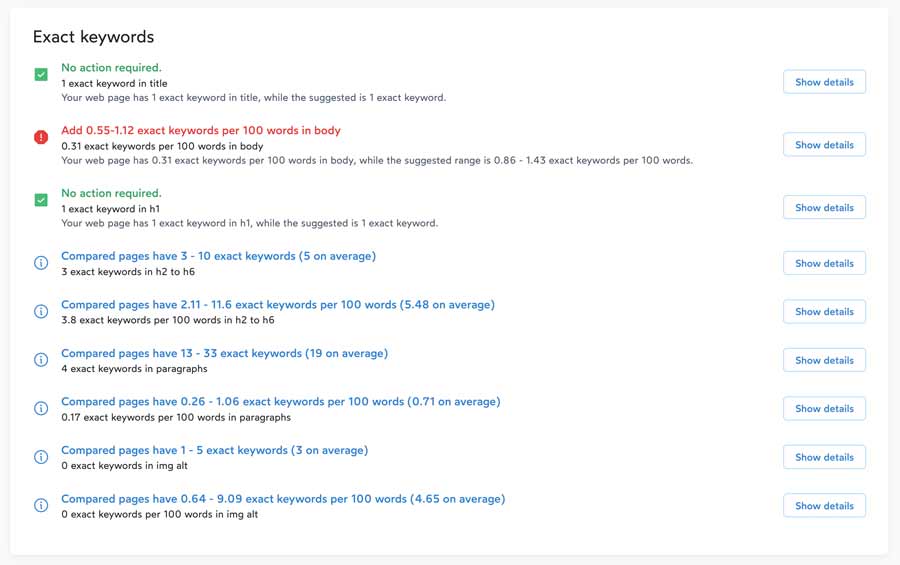
Here, Surfer SEO will illustrate how to match up to the top ranking sites in terms of the presence of exact keywords appearing on your title, body and headings.
The goal, once again, is to get as many of these subcategories as possible to turn Green.
Partial Keywords
This is the same type of audit, but with a focus on partial keywords instead:
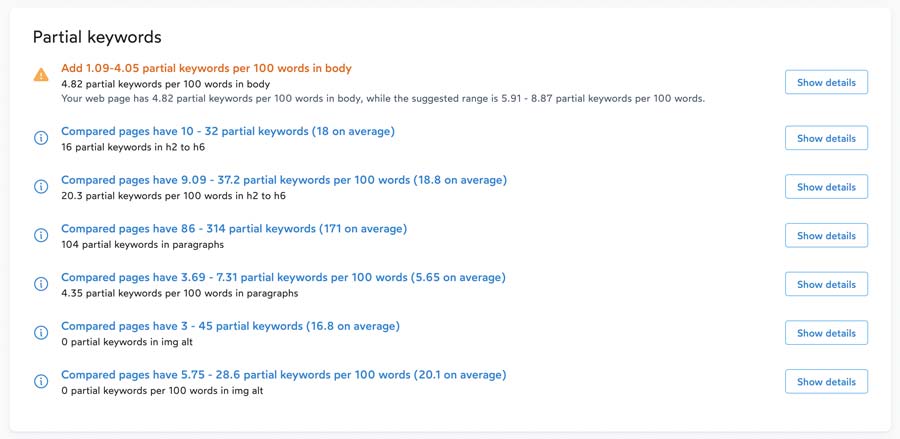
Similarly to exact keywords, your goal is to turn subcategories to Green as much as you can.
Page Structure
Next in the on-page SEO audit is page structure. This audit checks for things like the number of headings in your post, the number of paragraphs, the number of image elements and the number of bolded elements:
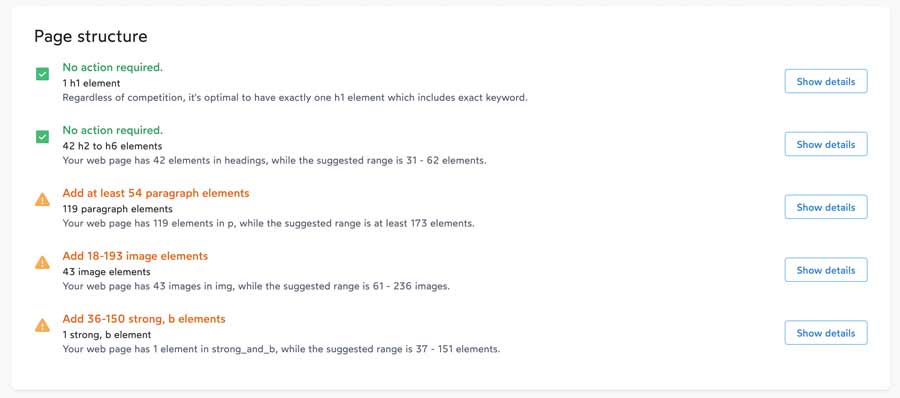
Your goal, once again, is to turn as many of these items as possible to Green.
Title and Meta Description Length
An indirect but important search ranking signal is the meta title length and the meta description length for your article. The reason is that if they’re too long, Google will truncate your text and add an ellipsis at the end (...).
If this is the case, people doing searches will not see the complete title and description for your post, thus reducing your click-through rate (CTR).
Surfer SEO will show you how you compare with the top ranked pages for your target keyword:

All you have to do now is to increase or reduce the number of characters in these meta tags to come into compliance with a placement on the first-page of search results.
All you have to do now is to increase or reduce the number of characters in these meta tags to come into compliance with first-page search results.
Time to First Byte
Time to first byte indicates how long it takes for your page to begin displaying content on users’ devices.
In order to appear on page one, you need to make sure that your time to first byte is in the same ballpark as your competitors:
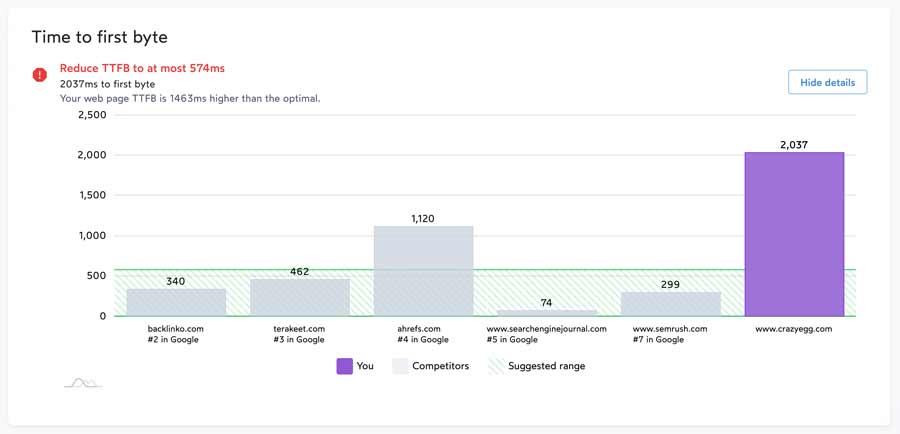
Surfer SEO will show how if you're in compliance with competitors appearing on the first page of search results.
If not, then you’ll need to take steps like adding caching software to your site that can load page elements asynchronously so that your time to first byte is significantly reduced.
Load Time
Page loading speeds have always played an important search ranking role for Google, but since the implementation of the recent Core Web Vitals algorithm update, they’ve taken on an even more important role.
Surfer SEO will show you how your page is loading in relation to your page-one competitors:

If you’re out of compliance with page one competitors for page load speeds, you’ll need to consider adding caching software to your site, running your site through a content delivery network (CDN) and if need be, switching to a faster web hosting provider.
Wrapping Things Up
So there you have it — a step-by-step guide on how to do an on-page SEO website audit using AI-powered tools, like Surfer SEO.
By following the steps outlined above, you’ll not only gain valuable insights into how you can improve your search rankings, but you’ll also know the exact recipe to take your search traffic to the next level, down to the individual changes you need to make on each webpage.
This article illustrates how AI is changing the website audit game by giving those who discover these tools first an unfair advantage over the competition.
So, go ahead and take advantage of this new technology before everyone else finds out about it. By then, you’ll be entrenched on the first page of search results!






